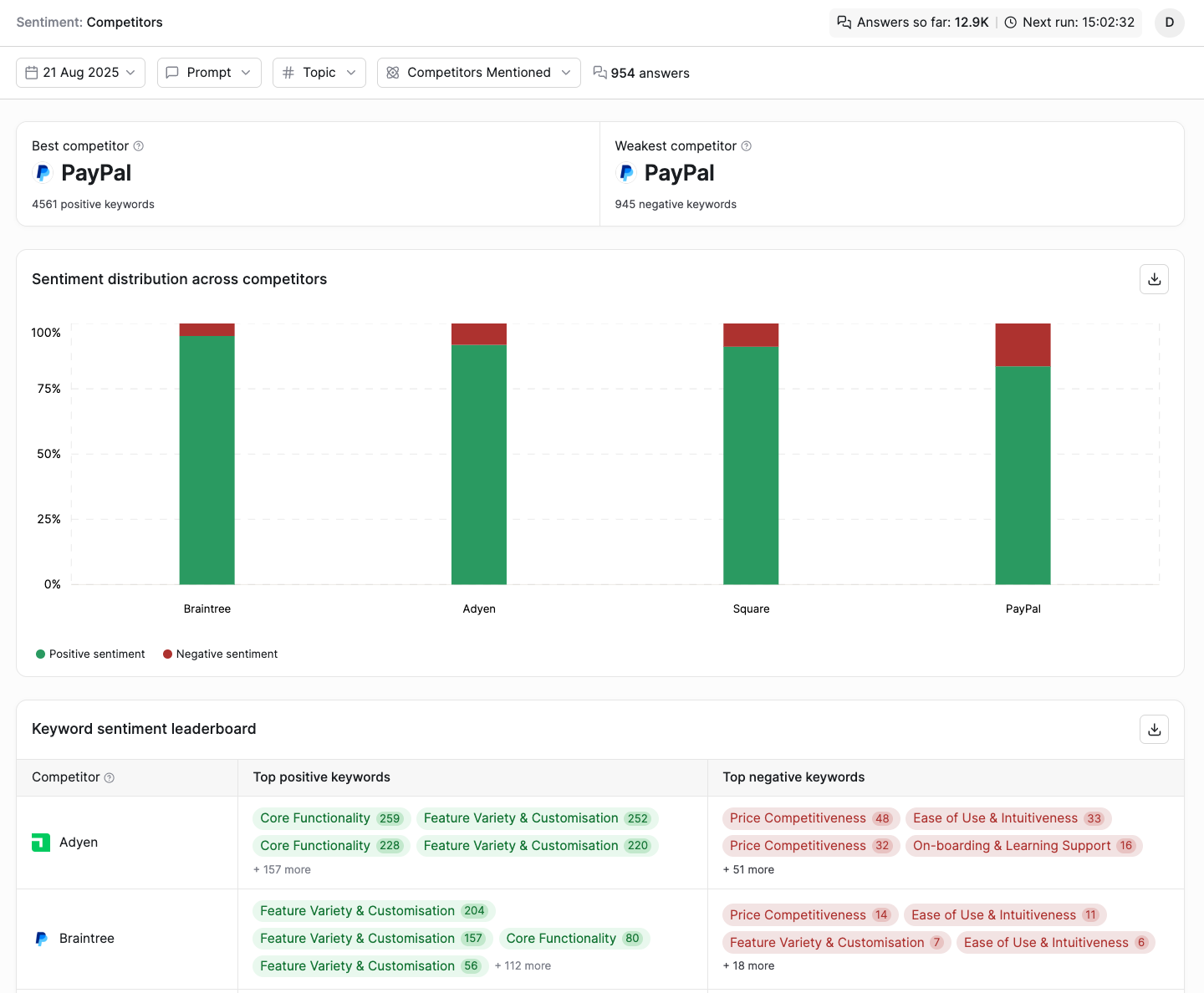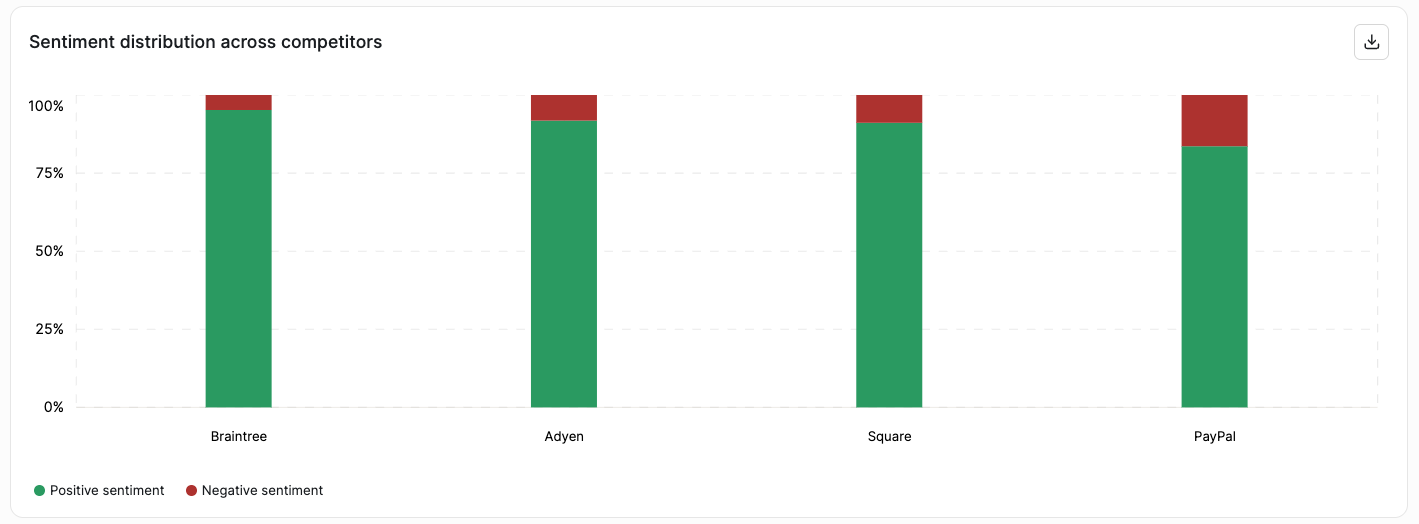Sentiment: Competitors
Overview
The Sentiment: Competitors page provides a comprehensive analysis of how your brand's sentiment performance compares against your key competitors. This feature helps you understand your competitive positioning in terms of customer perception and identifies opportunities to improve your brand sentiment strategy.

Core Components
1. Best Competitor
What this shows:
Identifies the competitor with the highest volume of positive sentiment keywords in your market. This metric reveals who has successfully captured the most favorable brand associations and positive mentions across analyzed content. The positive keyword count is displayed directly below the competitor's name.
Why it matters:
- Benchmarking excellence: Understand who sets the standard for positive brand perception in your market
- Strategy insights: Analyze what messaging and positioning strategies work best in your industry
- Gap identification: Reveals the sentiment performance gap you need to bridge to become the market leader
- Competitive intelligence: Learn from the best performer's approach to customer engagement
2. Weakest Competitor
What this shows:
Highlights the competitor with the highest volume of negative sentiment keywords. This metric identifies which brand is struggling most with negative perception, displaying their negative keyword count for context.
Why it matters:
- Opportunity identification: Reveals market gaps where you can differentiate through superior customer experience
- Risk awareness: Understand common pitfalls in your industry to avoid
- Competitive advantage: Position your brand as a better alternative in areas where competitors fail
- Market positioning: Craft messaging that addresses industry-wide concerns more effectively
3. Sentiment Distribution Across Competitors
What this shows:
A stacked bar chart displaying the proportion of positive versus negative sentiment for each competitor. Each bar represents 100% of a competitor's sentiment, with green sections showing positive sentiment and red sections indicating negative sentiment. Taller green sections indicate better overall sentiment performance.

Why it matters:
- Visual benchmarking: Instantly compare your sentiment ratio against all competitors
- Performance patterns: Identify if negative sentiment is an industry-wide challenge or competitor-specific
- Strategic planning: Set realistic sentiment improvement targets based on market conditions
- Trend identification: Spot which competitors have found effective solutions to common complaints
4. Keyword Sentiment Leaderboard
What this shows:
A detailed table breaking down the most impactful positive and negative keywords for each competitor. Keywords are ranked by frequency and impact, with positive keywords shown in green and negative in red. Numbers beside each keyword indicate mention volume, helping you understand which terms drive sentiment most strongly.

Why it matters:
- Keyword strategy optimization: Discover which positive keywords resonate most in your market
- Content planning: Identify high-impact keywords to incorporate in your messaging
- Risk management: Understand which negative keywords to address proactively
- Competitive messaging: Learn what language works and what triggers negative responses
- SEO optimization: Target positive sentiment keywords while addressing negative concerns in your content
Key Benefits
- Data-driven decision making: Move beyond assumptions with concrete sentiment metrics
- Competitive intelligence at scale: Monitor multiple competitors simultaneously
- Strategic prioritization: Focus resources on the most impactful improvements
- Performance tracking: Establish baselines and measure progress over time
FAQs
Q: How is sentiment determined for each keyword?
A: Advanced natural language processing algorithms analyze the context in which keywords appear to determine positive or negative sentiment.
Q: Can I export this data for reporting?
A: Export functionality is available through the download option, allowing you to share insights with stakeholders.
Q: What's the difference between "best competitor" and highest positive sentiment ratio?
A: The "best competitor" has the highest absolute number of positive keywords, while sentiment ratio shows the percentage split. A competitor might have a high ratio but lower volume.
Q: How can I improve my sentiment scores relative to competitors?
A: Address negative keywords appearing in your profile while amplifying messaging around successful positive keywords. Study your best-performing competitor's approach for insights.
Q: Is historical sentiment data available?
A: Use the date filter to analyze different time periods and track how sentiment evolves over time.
Updated 4 months ago
